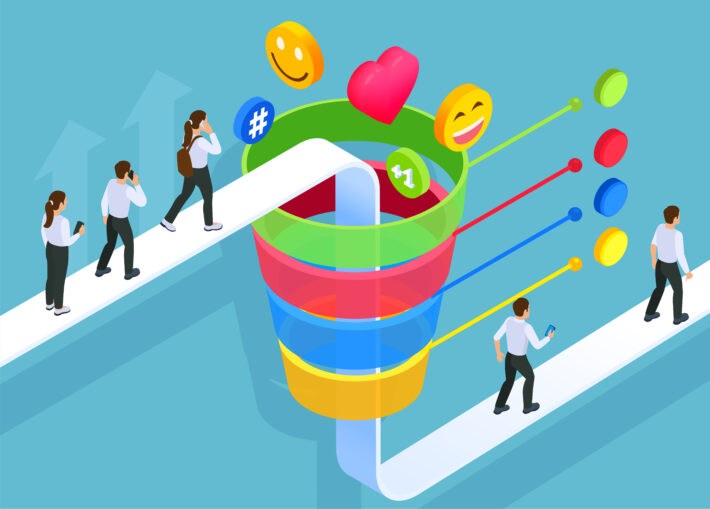How Customer Experience Management (CXM) Software Retains Customer Trust

In the age of the empowered customer, building trust is no longer a luxury, it’s a necessity. But how do you ensure consistent, personalized experiences that build lasting loyalty? Customer Experience Management (CXM) software provides the answer. Learn how to harness the full potential of your customer base and create a loyal customer community that drives long-term success with CXM software!
What is Customer Experience Management (CXM) Software?
Customer Experience Management (CXM) software is a comprehensive solution designed to help businesses orchestrate and optimize the entire customer journey, from initial awareness to post-purchase loyalty. It is a powerful tool that enables companies to deliver exceptional customer experiences by integrating various components of customer interactions and data.
At its core, CXM software provides a centralized platform for managing customer data, analyzing customer behavior, and streamlining customer-facing processes. It combines features such as customer relationship management (CRM), marketing automation, customer service and support, and analytics into a unified system.
Why is it important to build trust with customers?
Building trust with customers is crucial because it forms the foundation of long-term relationships and brand loyalty.
- Trust encourages customers to return, make repeat purchases, and engage more deeply with a company. It also leads to positive word-of-mouth recommendations, enhancing the brand’s reputation.
- Trust reduces the perceived risk of buying, making customers more comfortable and confident in their decisions.
- Ultimately, trust fosters customer satisfaction, which translates into sustained business growth and a competitive edge in the market.
How does CXM software help deliver the best customer experience?
CXM software helps deliver the best customer experience in several ways:
1. Gathering and Analyzing Customer Data:
- Tracks customer interactions across all touchpoints (website, email, social media, etc.)
- Collects feedback through surveys, reviews, and support interactions
- Analyzes data to understand customer behavior, preferences, and sentiment
- Identifies areas for improvement and opportunities for personalization
2. Personalization and Proactive Engagement:
- Uses customer data to personalize interactions and content
- Recommends products and services based on individual needs
- Delivers targeted marketing campaigns and offers
- Proactively identifies and addresses potential issues before they escalate
3. Streamlining Customer Journeys:
- Automates repetitive tasks and workflows
- Provides self-service options for common inquiries
- Offers omnichannel support across various channels
- Creates a seamless and consistent customer experience
4. Real-time Insights and Action:
- Provides real-time dashboards and reports to track customer sentiment and behavior
- Enables businesses to quickly respond to customer needs and feedback
- Allows for proactive intervention to prevent churn and improve satisfaction
5. Predictive Intelligence:
- Uses AI and machine learning to predict customer behavior and needs
- Identifies at-risk customers and opportunities for upselling and cross-selling
- Enables proactive outreach and personalized communication
This suggests that a company’s ability to use CXM effectively distinguishes it from its competitors.
What’s the Difference Between CRM and CXM?
The key difference between Customer Relationship Management (CRM) and Customer Experience Management (CXM) lies in their focus and approach.
- CRM: Focuses on managing customer data and interactions to improve sales, marketing, and support. It’s about collecting and analyzing data to understand customer behavior and needs.
- CXM: Focuses on designing and delivering positive customer experiences across all touchpoints. It’s about taking action based on data to proactively improve how customers feel about your brand.
Think of CRM as the foundation of knowledge about your customers, while CXM is about using that knowledge to create better experiences.

How to Choose the Right CXM Software for Your Business?
Choosing the right CXM software for your business requires careful consideration of your specific needs and goals. Here are some key steps to guide you:
1. Define your goals and needs:
- What are you trying to achieve with CXM? Is it improving customer satisfaction, reducing churn, or personalizing experiences?
- What specific customer touchpoints do you want to focus on? (Website, email, social media, etc.)
- What type of data do you need to collect and analyze? (Feedback, behavior, sentiment, etc.)
2. Evaluate features and functionalities:
- Data collection and analysis: Does the software offer the necessary tools to gather and analyze customer data from various sources?
- Personalization and automation: Can it personalize content, recommendations, and interactions based on individual customer preferences?
- Omnichannel support: Does it provide a seamless experience across all customer touchpoints?
- Reporting and insights: Does it offer real-time dashboards and reports to track customer sentiment and behavior?
- Predictive intelligence: Does it use AI and machine learning to predict customer needs and identify potential issues?
3. Consider user-friendliness and scalability:
- Is the software easy to use and integrate with your existing systems?
- Can it scale to meet your future needs as your business grows?
4. Research and compare vendors:
- Shortlist potential vendors based on your requirements and budget.
- Read reviews and case studies to understand their capabilities and customer experiences.
- Request demos and free trials to get hands-on experience with the software.
5. Look for customer references:
- Talk to other businesses using the software to get their feedback and insights.
Additional factors to consider:
- Pricing and implementation costs: Compare pricing models and consider the total cost of ownership.
- Security and data privacy: Ensure the software meets your security and compliance requirements.
- Vendor support: Evaluate the level of support and training offered by the vendor.
By following these steps and carefully evaluating your options, you can choose the CXM software that best aligns with your unique needs and goals, ultimately leading to a more positive and profitable customer experience.

10 Best Customer Experience Management (CXM) Software of 2024
Here’s a list of the top 10 CXM software options, highlighting their key features, strengths, and weaknesses:
1. SurveySensum
SurveySensum is a leading CXM software catering to both SMEs and enterprises, offering industry-specific surveys, real-time text analysis, and a closed-loop ticketing system for actionable insights and improved customer experiences.
Features:
- Cloud-based help desk software
- Ticket management system
- Teamwork tools
- Automation
- Reporting and analytics
Pros: User-friendly, affordable platform
Cons: Limited language options, contact management issues
2. HubSpot
HubSpot offers a comprehensive CXM platform with features like CRM, marketing automation, and customer service tools, enabling businesses to manage customer interactions effectively.
Features:
- CRM integration
- Marketing automation
- Customer service tools
- Personalization options
Pros: All-in-one platform, user-friendly interface
Cons: Higher pricing for advanced features
3. Zoho CRM Plus
Zoho CRM Plus provides a holistic customer experience solution with CRM, marketing automation, and customer service tools, enhancing customer engagement and satisfaction.
Features:
- CRM functionalities
- Marketing automation
- Customer service tools
- Analytics and reporting
Pros: Affordable pricing, comprehensive features
Cons: Learning curve for new users, limited customization options
4. Qualtrics
Qualtrics offers a robust CXM platform with advanced survey and feedback tools, AI-powered analytics, and personalized content delivery, enabling businesses to enhance customer experiences and drive loyalty.
Features:
- Advanced survey tools
- AI-powered analytics
- Personalized content delivery
- Customer journey mapping
Pros: Powerful analytics, customisable surveys
Cons: Higher pricing for advanced features, complex setup process
5. UserZoom
UserZoom specializes in usability testing for websites and applications, facilitating quick iterations and optimizing development processes to improve customer experiences.
Features:
- Usability testing
- Dashboard for compiling reports
- Research capabilities
- Testing for wireframes, websites, and mobile apps
Pros: Large participant database, diverse testing options
Cons: Limited language support, customization options
6. Birdeye
Birdeye offers a customer experience platform with a focus on reputation management, customer feedback, and review generation, helping businesses enhance their online presence and customer interactions.
Features:
- Reputation management tools
- Review generation
- Customer feedback collection
- Social media integration
Pros: Reputation monitoring, social media engagement
Cons: Higher pricing plans, limited customization options
7. Zendesk
Zendesk provides a customer service platform with ticketing systems, knowledge base management, and analytics tools, enabling businesses to streamline customer support processes and improve customer satisfaction.
Features:
- Ticketing system
- Knowledge base management
- Analytics and reporting
- Automation features
Pros: User-friendly interface, efficient ticket management
Cons: Limited language options, contact management challenges
8. Acquire
Acquire offers efficient customer service workflows with features like live chat, co-browsing, and AI-powered chatbots, enhancing customer interactions and support processes.
Features:
- Live chat support
- Co-browsing capabilities
- AI-powered chatbots
- Ticketing system
Pros: Multi-channel support, AI integration
Cons: Limited customization options, higher pricing for advanced features
9. Satmetrix
Satmetrix provides a holistic voice-of-the-customer (VOC) solution with features for collecting and analyzing customer feedback, enabling businesses to gain valuable insights and improve customer experiences.
Features:
- Voice-of-the-customer solution
- Feedback collection tools
- Analytics and reporting
- Customer sentiment analysis
Pros: Comprehensive VOC features, actionable insights
Cons: Higher pricing plans, complex setup process
10. Adobe Experience Manager
Adobe Experience Manager offers digital asset and content management features, enabling businesses to create personalized content, optimize digital experiences, and enhance customer engagement.
Features:
- Digital asset management
- Content creation tools
- Personalization options
- Analytics and reporting
Pros: Robust content management, personalization features
Cons: Higher pricing for advanced features, learning curve for new users
Disclaimer: The information presented is for informational purposes only and does not constitute an endorsement or guarantee of performance by the platform providers mentioned. It is recommended to conduct thorough research and consider specific business needs before making any purchasing decisions.

10 Questions to Ask When Evaluating a CXM Software
Whether you’re new to customer experience management or in the market for the right CXM software, here are 10 key questions to inquire about any CXM software, technology, or methodology.
1. What features does the CXM software offer?
- Look for features like customer feedback management, analytics, omnichannel support, and automation.
2. Is the CXM software customizable to our specific needs?
- Ensure the software can be tailored to fit your business requirements and scale as you grow.
3. How user-friendly is the CXM software?
- Choose a platform with an intuitive interface that requires minimal training for users.
4. Does the CXM software integrate with our existing systems?
- Opt for software that seamlessly integrates with your CRM, ERP, and other essential business tools.
5. What level of customer support does the CXM software provider offer?
- Select a provider that offers reliable customer support, including live chat, phone, and email assistance.
6. What security measures does the CXM software have in place?
- Ensure the software complies with industry regulations and offers robust data security features.
7. How scalable is the CXM software as our business grows?
- Choose a solution that can accommodate your business’s growth without compromising performance.
8. What analytics and reporting capabilities does the CXM software provide?
- Look for software that offers comprehensive analytics to track customer interactions and measure performance.
9. Does the CXM software offer mobile compatibility?
- Ensure the software can be accessed and used on mobile devices for flexibility and convenience.
10. What are the pricing options for the CXM software?
- Consider the cost structure, including subscription plans, pricing tiers, and any additional fees for customization or support.
Looking for the perfect CXM software tailored to your business needs? Wondering how to sift through countless options? Experience the ease of informed decision-making as StaQ.ai navigates the complex landscape of CXM software options on your behalf. With StaQ.ai, you’re not just finding software; you’re unlocking the potential for unparalleled customer satisfaction and business growth.
Visit StaQ.ai today and find your ideal software match!



